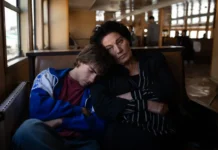Unveil the wonders of science and cinema with our in-depth exploration of surprising scientific concepts in Jurassic Park! Delve into fascinating facts about the film, from Spielberg’s unexpected discovery of the novel to the groundbreaking special effects contributions by George Lucas. Discover how big names nearly occupied lead roles, the origins of the iconic T. rex roar, and the real-life injuries that occurred during filming.

Get ready for an adventure as we reveal the secrets behind the film’s computer screens and the improvised moments that became cinematic magic. Join us as we delve into the impact Jurassic Park had on paleontology and the enduring legacy it left on both science and storytelling.
Here are some interesting facts you may not know about Jurassic Park:
10Spielberg found out about Jurassic Park while working on ER
Director Steven Spielberg first discovered the novel Jurassic Park by Michael Crichton while he was shooting an episode of the TV series ER. He immediately acquired the rights and started developing it into a film.
9Jurassic Park almost took a backseat to Schindler’s List

Spielberg initially planned to delay the production of Jurassic Park and focus on making Schindler’s List. However, he eventually decided to work on both films simultaneously, with Jurassic Park being released first.
8George Lucas helped with post-production
Spielberg sought the help of his friend and fellow filmmaker, George Lucas, during the post-production process. Lucas provided advice and suggestions regarding the digital effects, which significantly contributed to the groundbreaking visuals of the film.
7Big names were considered for the cast

Before settling on the final cast, several big-name actors were considered for the lead roles. For instance, Harrison Ford was considered for the role of Dr. Alan Grant, while Sean Connery was considered for the role of John Hammond.
6The T. rex roar is a combination of animal sounds
The iconic roar of the Tyrannosaurus rex in the film is actually a combination of various animal sounds. It includes recordings of elephants, alligators, tigers, and even penguins.
5The Dilophosaurus was fictionalized

The Dilophosaurus in Jurassic Park is portrayed as having the ability to spit venom in the film. In reality, there is no evidence to support this behavior in the actual dinosaur species.
4The computer screens were real
The scenes showing computer screens with complex graphics and animations were not created using CGI. Instead, the filmmakers used actual programs like Softimage and Wavefront to generate those images, making them functional and interactive.
3The T. rex scene caused some injuries
During the filming of the iconic T. rex attack scene, a practical effect malfunctioned, causing actress Laura Dern to injure her leg. Additionally, the animatronic T. rex head accidentally hit actor Richard Attenborough, resulting in a minor cut on his forehead.
2The Brachiosaurus sneeze was improvised

In one scene, where a Brachiosaurus sneezes on Lex and Tim, the sneeze was entirely improvised by the animatronic dinosaur. The actors’ reactions to the unexpected sneeze were genuine.
1The film had a profound impact on paleontology

Jurassic Park sparked a renewed interest in paleontology and dinosaur research. Many scientists credit the film for inspiring a new generation of researchers and contributing to advancements in our understanding of dinosaurs.
Conclusion
The captivating world of Jurassic Park not only entertained audiences worldwide but also brought forth a wave of scientific curiosity and innovation. From Spielberg’s visionary storytelling to the meticulous attention to detail in bringing dinosaurs back to life on the big screen, this film remains a testament to the power of imagination and its influence on both cinema and scientific exploration.
As we reflect on the unexpected anecdotes and impactful moments behind the making of Jurassic Park, we are reminded of the enduring legacy it has left on popular culture and the realm of paleontology. Let us continue to marvel at the wonder and magic of Jurassic Park, where the past meets the future in a thrilling blend of science and fiction.


















































